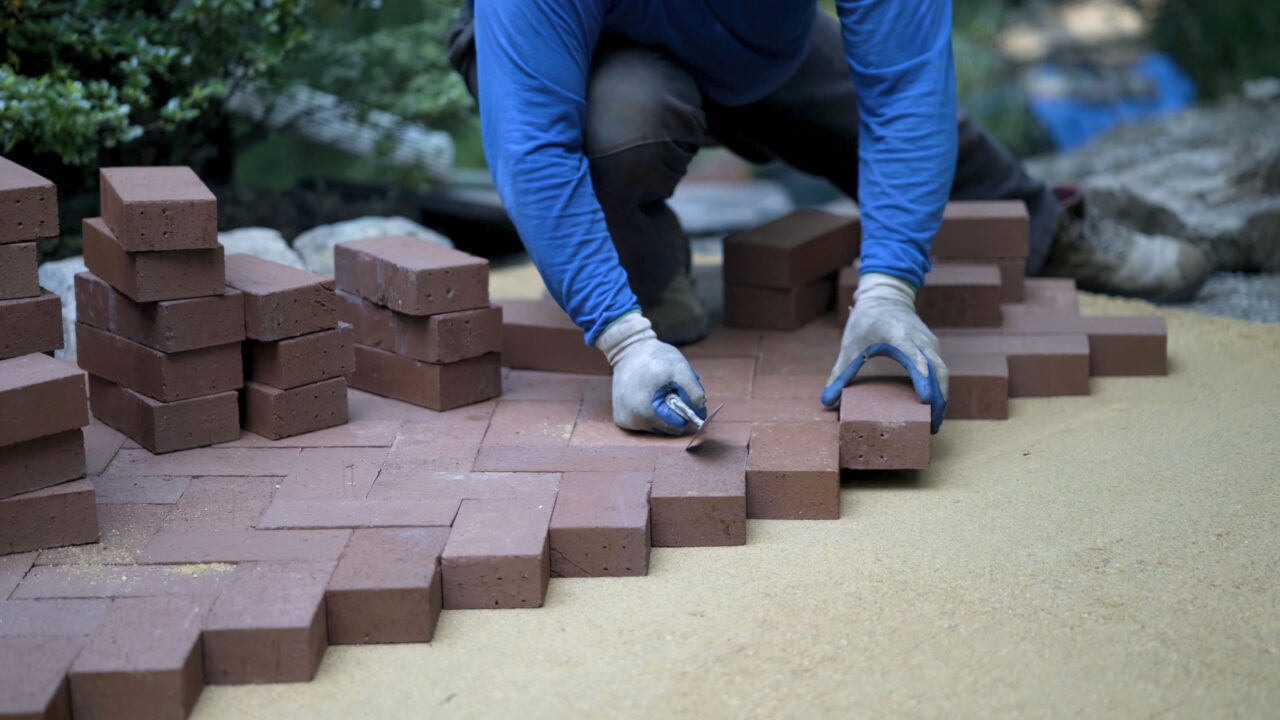One of the most crucial, yet overlooked, aspects of landscape design is the concept of “hardscaping”, otherwise known as the non-living factors of a landscape. This includes pathways, patios, decks, walls, and more. Hardscaping provides the structure and stability needed to organize the living elements of the design, such as trees, grass, and other plants.
Complementary Designs
Understanding the difference between hardscaping and softscaping is critical to creating a design that balances the two. Hardscaping includes inanimate objects, while softscaping involves the living, “softer” elements.
Although a landscape with all softscape is lush and natural, it can lack structure and usability, according to landscaping blogger Land Landscapes, LLC. On the other end of that spectrum, too much hardscaping might feel cold and uninviting. Having the perfect balance between these two ideas is crucial to designing an inviting space for your commercial property. “A stone patio surrounded by flowering plants and shrubs offers both functionality and beauty, creating a space where nature and design coexist harmoniously,” writes the blog.
Practicality
Hardscaping not only increases the aestheticism of a design, but certain hardscapes have specific responsibilities within the landscape, especially in a commercial setting. For instance, patio spaces provide relaxation, entertainment, and a place for community engagement.
Land Landscapes adds that walkways and paths ensure easy and safe movement throughout the commercial space, and retaining walls can prevent soil erosion. Additionally, a driveway adds both practicality and curb appeal to the design.
Things to Consider
When deciding the unique balance needed for your commercial landscape, ask yourself these questions:
- What is the purpose of the hardscaping element I’m considering? For example, do I need a pathway to navigate through the garden? Is a patio necessary for outdoor dining?
- What materials will be the most durable, have the least amount of maintenance, save money, and blend in well with the landscape?
- Are my chosen hardscaping elements in proportion to both the size of the outdoor space and my commercial building? Consider the height, width, and depth of each element.
- Does my hardscape complement or compete with my softscape design?
- What colors and textures fit the mood and style of the space?
- Can my chosen materials withstand the local climate conditions?
- Does my design have effective drainage to prevent pooling and erosion?
- Is my hardscape properly lit? This is important for both the aesthetics of your design and its safety.
- Do my chosen materials promote longevity, and are they low-maintenance?
- What permits are necessary for my hardscaping project?
Professional Installation
Although some projects can be done without a permit in Florida, such as patio slabs, most hardscaping requires the help of a professional. Projects especially require professional installation if they include complex features such as retaining walls or intricate paving patterns.
As far as professional maintenance, it depends on what materials are used. Wood will most likely need regular staining or sealing, but stone or concrete will need only occasional cleaning or weeding between pavers. Nevertheless, regular inspection is important for effectively caring for both hardscape and softcape elements.
For more information, visit our Contact Us page to send questions or schedule an appointment.


